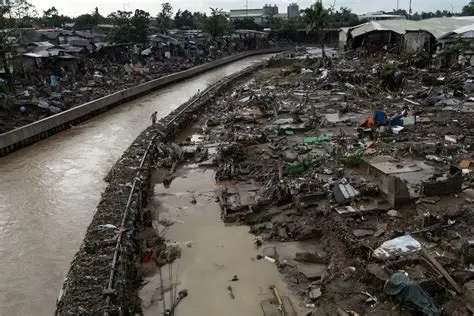President Ferdinand Marcos Jr has declared a state of national calamity after Typhoon Kalmaegi left at least 114 people dead and nearly 130 missing in the country’s central provinces, in what officials have described as the deadliest natural disaster to strike the Philippines this year.
The majority of fatalities were caused by drowning in flash floods, with Cebu province suffering the heaviest toll. At least 71 people died there, while 65 remain missing and 69 were injured, according to the Office of Civil Defence. In neighbouring Negros Occidental, 62 people were reported missing.
The typhoon, which exited the archipelago on Wednesday and moved into the South China Sea, affected nearly two million people nationwide. More than 560,000 were displaced, including 450,000 who sought refuge in emergency shelters.
Marcos’s declaration, announced during a meeting with disaster-response officials on Thursday, enables the government to release emergency funds more swiftly and to impose measures against food hoarding and price manipulation.
Officials have warned that another tropical cyclone forming in the Pacific could intensify into a super typhoon and strike the northern Philippines early next week.
Among those killed during the disaster were six members of the Philippine Air Force, whose helicopter crashed in Agusan del Sur while en route to deliver humanitarian aid. The cause of the crash has not been disclosed.
In Cebu, swollen rivers and waterways inundated residential areas, forcing residents to climb onto rooftops to await rescue. Governor Pamela Baricuatro said the devastation may have been worsened by years of quarrying, which clogged rivers, and by substandard flood control projects. A corruption scandal involving such projects has already fuelled public anger and protests across the country.
The province was still recovering from a 6.9-magnitude earthquake on 30 September, which killed at least 79 people and displaced thousands, when Kalmaegi struck.
The Coast Guard reported that ferries and fishing boats were barred from sailing during the storm, leaving more than 3,500 passengers and cargo truck drivers stranded at nearly 100 seaports. At least 186 domestic flights were cancelled.
The Philippines experiences around 20 typhoons and storms each year, in addition to frequent earthquakes and volcanic activity, making it one of the world’s most disaster-prone nations.



